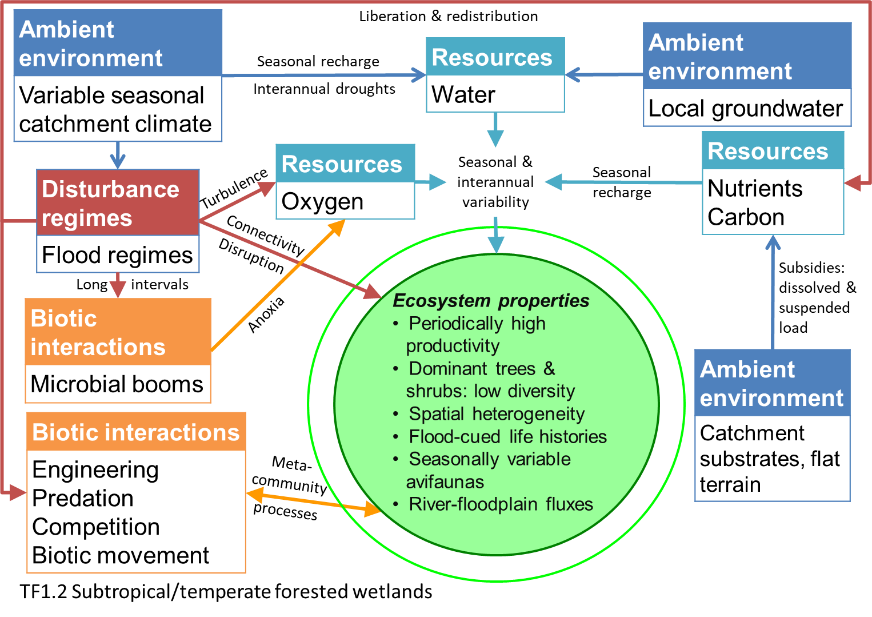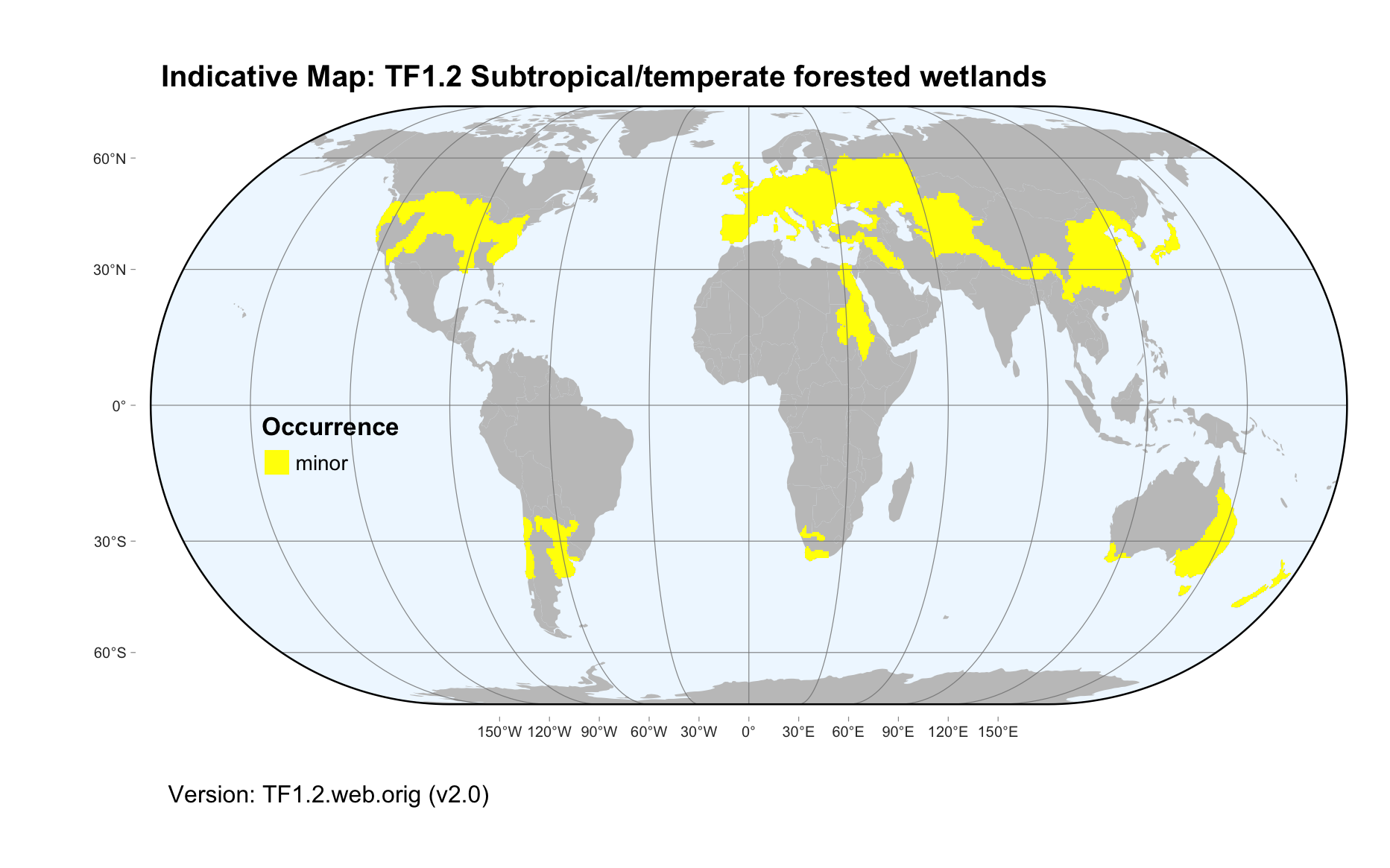Global ecosystem typology
Alternative site for the Global ecosystem typology with additional information for ecosystem profiles and indicative maps.
This site is maintained by jrfep
TF1.2 Subtropical/temperate forested wetlands
Biome: TF1. Palustrine wetlands biome
Contributors:
(texts)
Forested wetlands in temperate and subtropical climates undergo periodic flooding. One or two tree species dominate the canopy. Trees shape the flow of flood waters, the ground surface, and the understorey, as well as animal habitats. With flooding, complex aquatic food webs support turtles, frogs, fish and birds, but can produce microbial blooms with nutrients flushed from the floodplain. Many vertebrates use these wetlands as refuges during dry times.
Key Features
Permently to seasonally wet (or flooded), nutrient poor, to nutrient rich, open to closed canopy forests, often on organic soils (peat); poor in woody species, high abundance of mosses and sedges and no to open woody species cover.
Overview of distribution
Subtropical to temperate regions of both hemispheres, mostly in humid climates.
Profile versions
- v1.0 (2020-01-20): RC Mac Nally; RT Kingsford; DA Keith
- v2.0 (2020-06-17): R Mac Nally; RT Kingsford; JA Catford; B Robson; DA Keith
- v2.01 ():
- v2.1 (2022-04-06): R Mac Nally; RT Kingsford; JA Catford; B Robson; DA Keith Full profile available at official site
Main references
Selected references for this functional group:
Mac Nally R, Cunningham SC, Baker PJ, Horner GJ, Thomson JR (2011) Dynamics of Murray-Darling floodplain forests under multiple stressors: The past, present, and future of an Australian icon Water Resources Research 47, W00g05
Diagrammatic assembly model

Maps
Maps are indicative of global distribution patterns are not intended to represent fine-scale patterns. The maps show areas of the world containing major (coloured red) or minor occurrences (coloured yellow) of each ecosystem functional group. See general notes on maps.
There are 2 alternative versions of the indicative map for this functional group, please compare description and sources below.
TF1.2.IM.orig_v2.0
Datasets
- Resolve-Ecoregions-2017
Map references
Dinerstein E, Olson D, Joshi A, Vynne C, Burgess ND, Wikramanayake E, Hahn N, Palminteri S, Hedao P, Noss R, Hansen M, Locke H, Ellis EE, Jones B, Barber CV, Hayes R, Kormos C, Martin V, Crist E, Sechrest W, Price L, Baillie JEM, Weeden D, Suckling K, Davis C, Sizer N, Moore R, Thau D, Birch T, Potapov P, Turubanova S, Tyukavina A, de Souza N, Pintea L, Brito JC, Llewellyn Barnekow Lillesø JP, van Breugel P, Graudal L, Voge M, Al-Shammari KF, Saleem M (2017) An Ecoregion-Based Approach to Protecting Half the Terrestrial Realm, BioScience 67: 534–545. DOI:10.1093/biosci/bix014. Data-set available on-line
TF1.2.web.orig_v2.0

Datasets
- Resolve-Ecoregions-2017
Map references
Dinerstein E, Olson D, Joshi A, Vynne C, Burgess ND, Wikramanayake E, Hahn N, Palminteri S, Hedao P, Noss R, Hansen M, Locke H, Ellis EE, Jones B, Barber CV, Hayes R, Kormos C, Martin V, Crist E, Sechrest W, Price L, Baillie JEM, Weeden D, Suckling K, Davis C, Sizer N, Moore R, Thau D, Birch T, Potapov P, Turubanova S, Tyukavina A, de Souza N, Pintea L, Brito JC, Llewellyn Barnekow Lillesø JP, van Breugel P, Graudal L, Voge M, Al-Shammari KF, Saleem M (2017) An Ecoregion-Based Approach to Protecting Half the Terrestrial Realm, BioScience 67: 534–545. DOI:10.1093/biosci/bix014. Data-set available on-line
Check: the Glossary / Profile structure / the public document